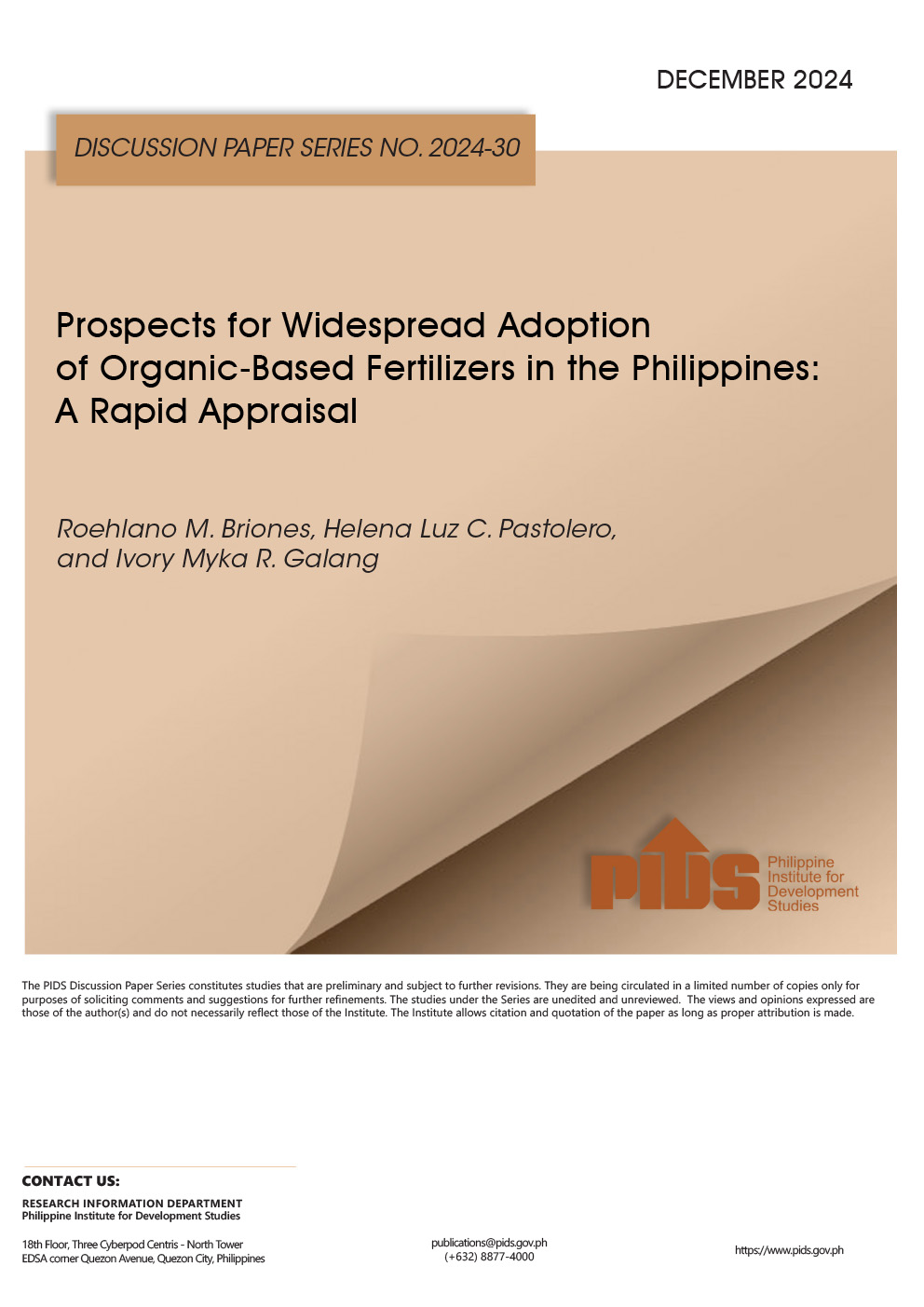The weakening of the peso against the US dollar could make certain food items more expensive in the near-term, but it would be good for exporters as it could improve their bottom line, economists said on Tuesday.
The Philippines is a net food importer that purchases various food items from across the globe. A weaker peso would increase the cost of importing some food products.
This could accelerate inflation, as nearly 40 percent of the country’s basket of goods is made up of food and beverages.
“Inflation will most likely increase because depreciation makes imports expensive,” University of Asia and the Pacific School of Economics Dean Cid Terosa told the BusinessMirror.
However, Philippine Institute for Development Studies Senior Research Fellow Roehlano Briones said higher costs could discourage businessmen from importing these items.
Briones added the impact of the peso appreciation may be limited, since the country’s rice imports may not be affected. The government has already bought its rice requirements for the year.
The share of rice to the total expenditure of households nationwide is at 8.92 percent, or nearly a tenth of the share of food and nonalcoholic beverages to the Consumer Price Index.
“Clearly, depreciation will tend to push up inflation. That will be tempered by reduced incentive to import due to higher cost,” Briones told the BusinessMirror.
EagleWatch Senior Research Fellow Alvin Ang and National Economic and Development Authority Undersecretary Rosemarie G. Edillon are not worried about the peso’s impact on inflation.
Ang said the depreciation may have a “limited” impact on inflation, since what the government measures is the average price.
Edillon said the peso’s level of depreciation is still within the expectations of the interagency Development Budget Coordination Committee (DBCC).
While the current level of the peso against the US dollar is above the exchange assumption of P48 to P50 for 2017, it is within the DBCC’s expectations of P48 to P51 until 2022.
“We’re okay. [The foreign exchange level] is still within our target,” Edillon said via text message.
The Philippine Statistics Authority (PSA) data showed food imports are included in raw materials and intermediate goods, particularly wheat and corn, as well as nondurable consumer goods.<
Based on the latest import data, the PSA said imported raw materials and intermediate goods accounted for 36.9 percent, or $2.6 billion of total payments, in June.
The PSA added wheat and corn imports amounted to $99.88 million and $11.91 million, respectively. Wheat accounted for 1.4 percent of total imports, while corn accounted for 0.2 percent.
‘Good for economy’
The peso reached an 11-year low last Friday, closing at its weakest at P51.49 to the greenback.
“Yes, it will be good for them,” Briones said when asked whether the depreciation of the peso would be beneficial to exporters.
The Semiconductors and Electronics Industries in the Philippines Inc. (Seipi), however, said the weakening of the peso would not have a significant impact on their profits. “The foreign exchange impact is not that significant. It takes up less than a percent,” Seipi president Dan Lachica told the BusinessMirror in a text message.
In its board meeting in July, the group projected that electronics shipments could grow by as much as 8 percent this year. Earlier, Seipi said it expects electronics exports this year to expand by 5 percent to 7 percent. Export receipts from electronics could return to the $30-billion level this year on the back of the recovery in demand from the country’s major markets.
Last year export receipts from electronics reached $ 28.44 billion. It was in 2010 when revenues from electronics shipments reached $31 billion. Electronics products remained as the country’s top export in June, accounting for 53.3 percent of total receipts in June. Revenues from electronics exports reached $2.62 billion.
Consumer spending could also pick up, as a weaker peso is generally good for families of overseas Filipino workers. The Philippine Exporters Confederation Inc. (Philexport) echoed the sentiment of Bangko Sentral ng Pilipinas Governor Nestor A. Espenilla Jr., who said the weakening of the peso is no cause for alarm, as it contributes to strengthening macroeconomic fundamentals.
“Generally, a weaker peso improves consumption in the economy, and I don’t think that even if it reached P52 to a dollar, there’ll be an adverse impact,” Philexport President Sergio R. Ortiz-Luis Jr. said.
The Philippines is a net food importer that purchases various food items from across the globe. A weaker peso would increase the cost of importing some food products.
This could accelerate inflation, as nearly 40 percent of the country’s basket of goods is made up of food and beverages.
“Inflation will most likely increase because depreciation makes imports expensive,” University of Asia and the Pacific School of Economics Dean Cid Terosa told the BusinessMirror.
However, Philippine Institute for Development Studies Senior Research Fellow Roehlano Briones said higher costs could discourage businessmen from importing these items.
Briones added the impact of the peso appreciation may be limited, since the country’s rice imports may not be affected. The government has already bought its rice requirements for the year.
The share of rice to the total expenditure of households nationwide is at 8.92 percent, or nearly a tenth of the share of food and nonalcoholic beverages to the Consumer Price Index.
“Clearly, depreciation will tend to push up inflation. That will be tempered by reduced incentive to import due to higher cost,” Briones told the BusinessMirror.
EagleWatch Senior Research Fellow Alvin Ang and National Economic and Development Authority Undersecretary Rosemarie G. Edillon are not worried about the peso’s impact on inflation.
Ang said the depreciation may have a “limited” impact on inflation, since what the government measures is the average price.
Edillon said the peso’s level of depreciation is still within the expectations of the interagency Development Budget Coordination Committee (DBCC).
While the current level of the peso against the US dollar is above the exchange assumption of P48 to P50 for 2017, it is within the DBCC’s expectations of P48 to P51 until 2022.
“We’re okay. [The foreign exchange level] is still within our target,” Edillon said via text message.
The Philippine Statistics Authority (PSA) data showed food imports are included in raw materials and intermediate goods, particularly wheat and corn, as well as nondurable consumer goods.<
Based on the latest import data, the PSA said imported raw materials and intermediate goods accounted for 36.9 percent, or $2.6 billion of total payments, in June.
The PSA added wheat and corn imports amounted to $99.88 million and $11.91 million, respectively. Wheat accounted for 1.4 percent of total imports, while corn accounted for 0.2 percent.
‘Good for economy’
The peso reached an 11-year low last Friday, closing at its weakest at P51.49 to the greenback.
“Yes, it will be good for them,” Briones said when asked whether the depreciation of the peso would be beneficial to exporters.
The Semiconductors and Electronics Industries in the Philippines Inc. (Seipi), however, said the weakening of the peso would not have a significant impact on their profits. “The foreign exchange impact is not that significant. It takes up less than a percent,” Seipi president Dan Lachica told the BusinessMirror in a text message.
In its board meeting in July, the group projected that electronics shipments could grow by as much as 8 percent this year. Earlier, Seipi said it expects electronics exports this year to expand by 5 percent to 7 percent. Export receipts from electronics could return to the $30-billion level this year on the back of the recovery in demand from the country’s major markets.
Last year export receipts from electronics reached $ 28.44 billion. It was in 2010 when revenues from electronics shipments reached $31 billion. Electronics products remained as the country’s top export in June, accounting for 53.3 percent of total receipts in June. Revenues from electronics exports reached $2.62 billion.
Consumer spending could also pick up, as a weaker peso is generally good for families of overseas Filipino workers. The Philippine Exporters Confederation Inc. (Philexport) echoed the sentiment of Bangko Sentral ng Pilipinas Governor Nestor A. Espenilla Jr., who said the weakening of the peso is no cause for alarm, as it contributes to strengthening macroeconomic fundamentals.
“Generally, a weaker peso improves consumption in the economy, and I don’t think that even if it reached P52 to a dollar, there’ll be an adverse impact,” Philexport President Sergio R. Ortiz-Luis Jr. said.












